
ex-@carbonbrief.org
ex-Green Alliance
PhD in Engineering
he/him
Personal account. Views expressed are my own and not those of my employer
5/END
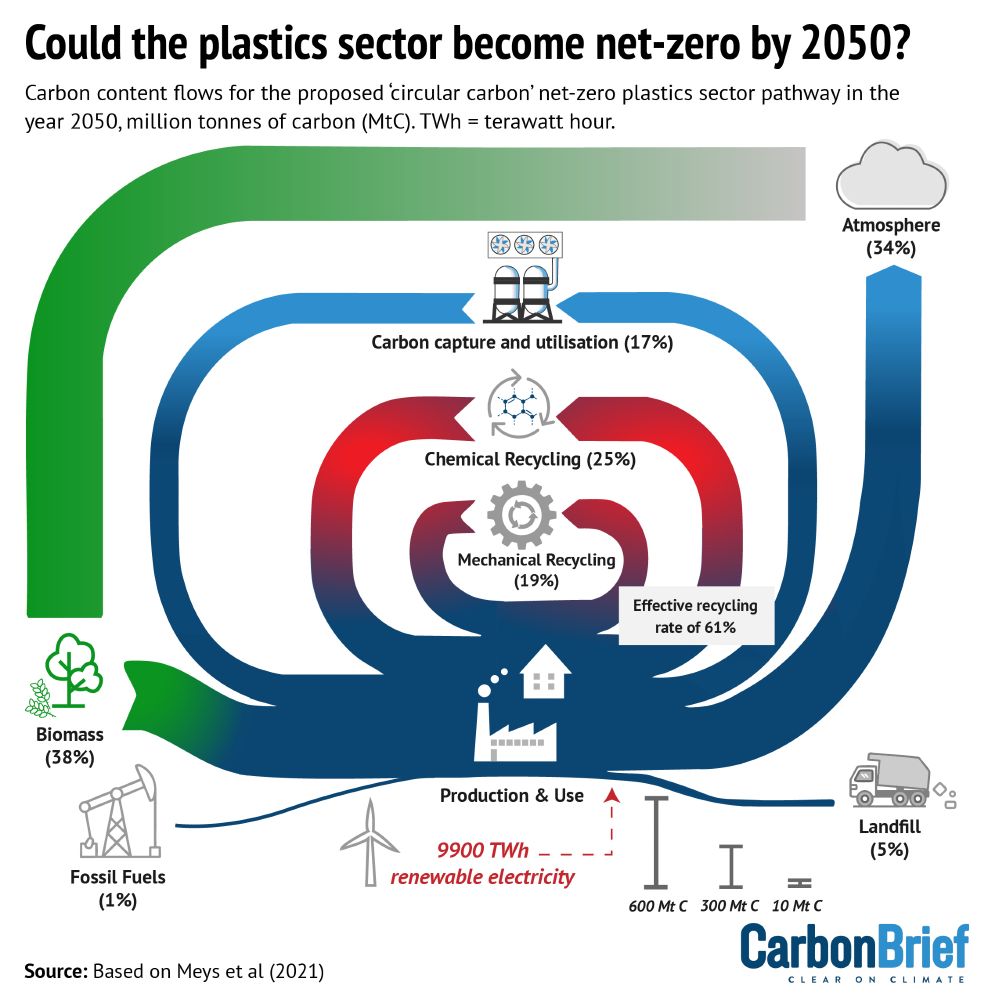
5/END
Only a few days to go until negotiations wrap up on Sunday!
Read more of our analysis in the article we released earlier this week with @ayeshatandon.carbonbrief.org:
https://buff.ly/4g6vCP3
4/

Only a few days to go until negotiations wrap up on Sunday!
Read more of our analysis in the article we released earlier this week with @ayeshatandon.carbonbrief.org:
https://buff.ly/4g6vCP3
4/
this Panama proposal has been added as an option under Article 6 on 'Supply/Sustainable Production'.
Let's see if it makes it into the final text.
https://buff.ly/3ZtNOwD
3/
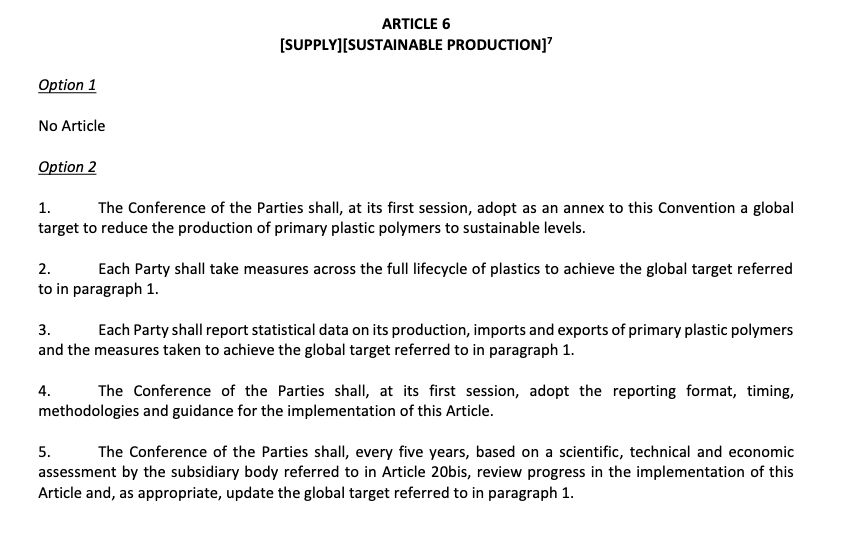
this Panama proposal has been added as an option under Article 6 on 'Supply/Sustainable Production'.
Let's see if it makes it into the final text.
https://buff.ly/3ZtNOwD
3/
It calls on countries to set a global target "to reduce the production primary plastic polymers to sustainable levels".
Momentum seems to be building.
https://buff.ly/49jT7lp
2/

It calls on countries to set a global target "to reduce the production primary plastic polymers to sustainable levels".
Momentum seems to be building.
https://buff.ly/49jT7lp
2/
The PSIDS group submitted a proposal on Tues that calls for a 40x40 target (40%⬇️ on 2025 levels by 2040): https://buff.ly/4eUAXrs
We show that 40x40 could cut plastics cumu. emissions between 2024-50 by half* wrt to BAU.
1/
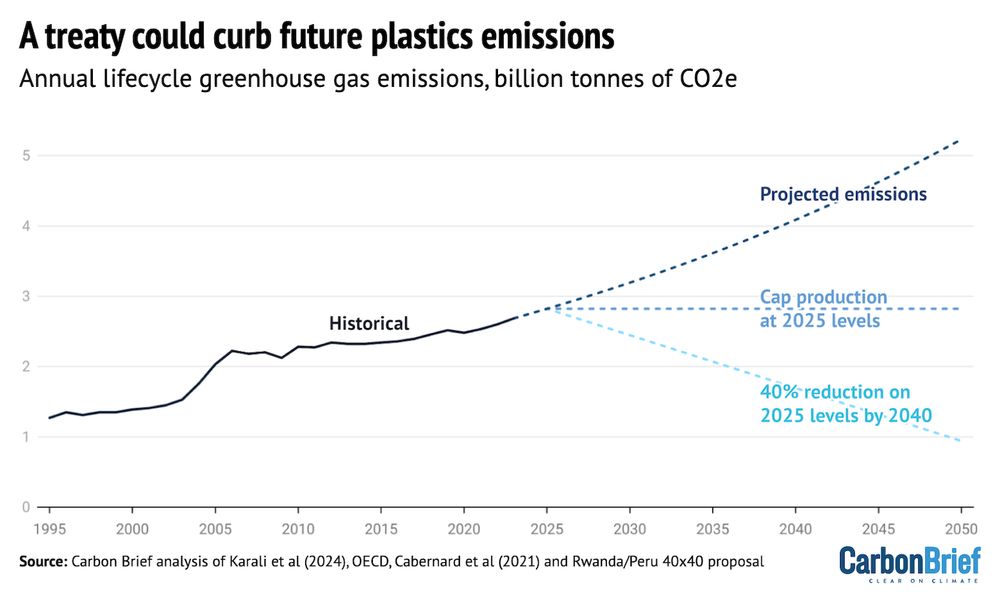
The PSIDS group submitted a proposal on Tues that calls for a 40x40 target (40%⬇️ on 2025 levels by 2040): https://buff.ly/4eUAXrs
We show that 40x40 could cut plastics cumu. emissions between 2024-50 by half* wrt to BAU.
1/
See this piece from my colleague Zeke:
www.carbonbrief.org/state-of-the...

See this piece from my colleague Zeke:
www.carbonbrief.org/state-of-the...

Plastics are where climate was in 1992 with UNFCCC, defining the rules for future COPs to follow.
If the treaty is vague and actions not legally binding, future success could be limited.
Getting this right, inc voting rules, is critical.
7/
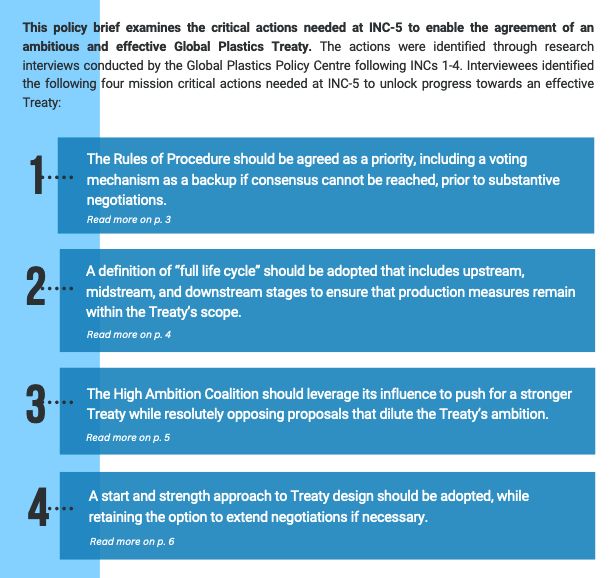
Plastics are where climate was in 1992 with UNFCCC, defining the rules for future COPs to follow.
If the treaty is vague and actions not legally binding, future success could be limited.
Getting this right, inc voting rules, is critical.
7/
A net zero plastics sector under BAU would require:
- Huge scale up of alternative feedstocks - limited by biomass and renewables availability
- V. high plastic recycling rates - challenging in practice
6/

A net zero plastics sector under BAU would require:
- Huge scale up of alternative feedstocks - limited by biomass and renewables availability
- V. high plastic recycling rates - challenging in practice
6/
Under Rwanda and Peru’s 40x40 proposal (40% reduction by 2040 on 2025 levels) from INC-4: future cumulative emissions from plastics could be halved by 2050 compared to BAU.
5/
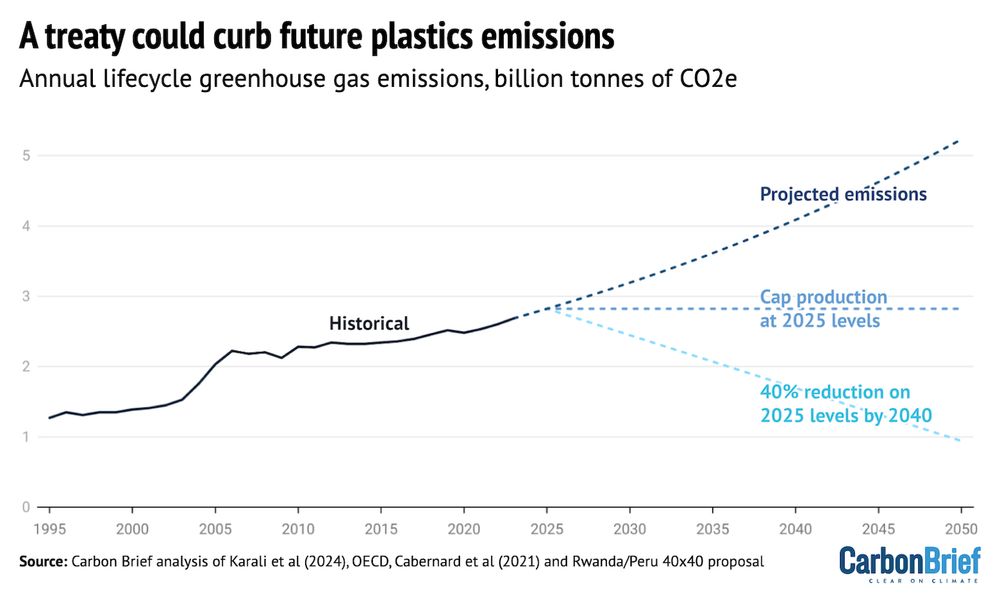
Under Rwanda and Peru’s 40x40 proposal (40% reduction by 2040 on 2025 levels) from INC-4: future cumulative emissions from plastics could be halved by 2050 compared to BAU.
5/
This is based on OECD projections who estimate that plastics use grows at about 2.5% a year.
Others have suggested it could be closer to 4% a year.
4/

This is based on OECD projections who estimate that plastics use grows at about 2.5% a year.
Others have suggested it could be closer to 4% a year.
4/
Most plastics are made from fossil fuels, including oil.
According to IEA, petrochemicals (read: mostly plastics) are the main driver of oil demand growth, as growth in other sectors stagnates.
3/
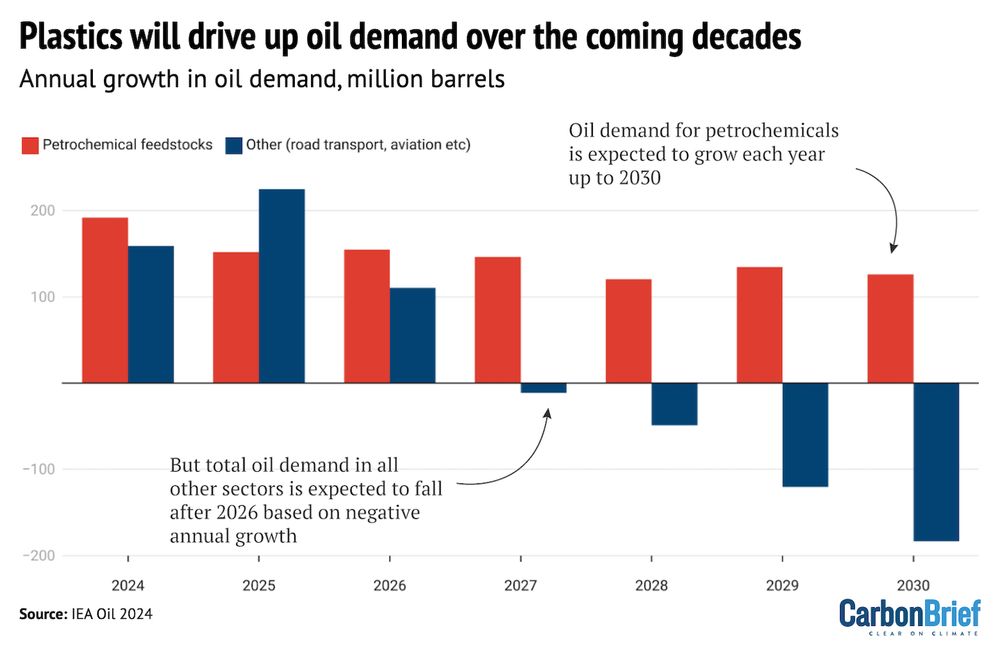
Most plastics are made from fossil fuels, including oil.
According to IEA, petrochemicals (read: mostly plastics) are the main driver of oil demand growth, as growth in other sectors stagnates.
3/
around 5% of global emissions.
Across their whole lifecycle, plastics emit around 2.7 bn tCO2e per year.
This puts them above energy use related emissions from oil and gas extraction and aviation.
[UPDATE: corrected chart]
2/

around 5% of global emissions.
Across their whole lifecycle, plastics emit around 2.7 bn tCO2e per year.
This puts them above energy use related emissions from oil and gas extraction and aviation.
[UPDATE: corrected chart]
2/
Lifecycle Plastics emissions are still greater than energy related emissions in oil and gas and aviation, but only 75% of the emissions of energy use in buildings.
This will be corrected in the article.

Lifecycle Plastics emissions are still greater than energy related emissions in oil and gas and aviation, but only 75% of the emissions of energy use in buildings.
This will be corrected in the article.
- @ayeshatandon.carbonbrief.org for the article text.
- Kerry, @jjgoodman.bsky.social and @tomoprater.carbonbrief.org for charts and visuals.
And Daniela Duran Gonzalez (of CIEL) for her insights.
Read the full article below ⬇️
https://buff.ly/4g6vCP3
8/End

- @ayeshatandon.carbonbrief.org for the article text.
- Kerry, @jjgoodman.bsky.social and @tomoprater.carbonbrief.org for charts and visuals.
And Daniela Duran Gonzalez (of CIEL) for her insights.
Read the full article below ⬇️
https://buff.ly/4g6vCP3
8/End
Plastics are where climate was in 1992 with UNFCCC, defining the rules for future COPs to follow.
If the treaty is vague and actions not legally binding, future success could be limited.
Getting this right, inc voting rules, is critical.
7/

Plastics are where climate was in 1992 with UNFCCC, defining the rules for future COPs to follow.
If the treaty is vague and actions not legally binding, future success could be limited.
Getting this right, inc voting rules, is critical.
7/
A net zero plastics sector under BAU would require:
- Huge scale up of alternative feedstocks - limited by biomass and renewables availability
- V. high plastic recycling rates - challenging in practice
6/

A net zero plastics sector under BAU would require:
- Huge scale up of alternative feedstocks - limited by biomass and renewables availability
- V. high plastic recycling rates - challenging in practice
6/
Under Rwanda and Peru’s 40x40 proposal (40% reduction by 2040 on 2025 levels) from INC-4:
Future cumulative emissions from plastics could be halved by 2050 compared to BAU.
5/

Under Rwanda and Peru’s 40x40 proposal (40% reduction by 2040 on 2025 levels) from INC-4:
Future cumulative emissions from plastics could be halved by 2050 compared to BAU.
5/
This is based on OECD projections who estimate that plastics use grows at about 2.5% a year.
Others have suggested it could be closer to 4% a year.
4/

This is based on OECD projections who estimate that plastics use grows at about 2.5% a year.
Others have suggested it could be closer to 4% a year.
4/
Most plastics are made from fossil fuels, including oil.
According to IEA, petrochemicals (read: mostly plastics) are the main driver of oil demand growth, as growth in other sectors stagnates.
3/

Most plastics are made from fossil fuels, including oil.
According to IEA, petrochemicals (read: mostly plastics) are the main driver of oil demand growth, as growth in other sectors stagnates.
3/
At the #INC-5 in Busan, countries are hoping to strike an agreement on a global treaty to reduce #plastic pollution.
But why is this relevant for climate? A 🧵
1/

Under Rwanda and Peru’s 40x40 proposal (40% reduction by 2040 on 2025 levels) from INC-4:
Future cumulative emissions from plastics could be halved by 2050 compared to BAU.
5/

Under Rwanda and Peru’s 40x40 proposal (40% reduction by 2040 on 2025 levels) from INC-4:
Future cumulative emissions from plastics could be halved by 2050 compared to BAU.
5/
This is based on OECD projections who estimate that plastics use grows at about 2.5% a year.
Others have suggested it could be closer to 4% a year.
4/

This is based on OECD projections who estimate that plastics use grows at about 2.5% a year.
Others have suggested it could be closer to 4% a year.
4/
Most plastics are made from fossil fuels, including oil.
According to IEA, petrochemicals (read: mostly plastics) are the main driver of oil demand growth, as growth in other sectors stagnates.
3/

Most plastics are made from fossil fuels, including oil.
According to IEA, petrochemicals (read: mostly plastics) are the main driver of oil demand growth, as growth in other sectors stagnates.
3/
Across their whole lifecycle, plastics emit around 2.7 bn tCO2e per year.
This puts them above aviation, oil and gas extraction and energy use in buildings.
2/

Across their whole lifecycle, plastics emit around 2.7 bn tCO2e per year.
This puts them above aviation, oil and gas extraction and energy use in buildings.
2/

